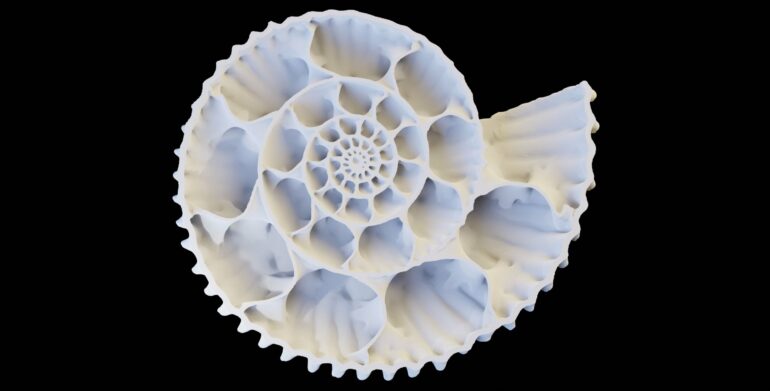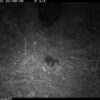Ammonoids are a group of extinct marine mollusk animals that are now an iconic fossil group often collected by amateurs. Over 350 million years of evolution, ammonoids developed increasingly elaborate shells with fractal-like geometry. For nearly 200 years, scientists have debated the reason why these animals show a trend of increasing complexity in their shell structures.
Dr. Robert Lemanis and Dr. Igor Zlotnikov from the B CUBE–Center for Molecular Bioengineering at TU Dresden created mechanical simulations of theoretical and computed tomography-based models to unveil a potential explanation: the intricate architecture of these shells may have been nature’s ingenious defense strategy against a wide array of predators. Their paper is published in the journal Science Advances.
“Over the course of 350 million years of evolution, ammonoids repeatedly evolved shells with increasingly complex inner walls. The persistence and repetitiveness of this trend imply some driving force; the question that has long remained unanswered is: What driving force? Opposition to water pressure, muscle attachments, respiration, Cartesian devils. All of these have been proposed as explanations for this trend but evidence for them is scarce. So we decided to explore a neglected idea,” explains Dr. Robert Lemanis, researcher in Dr. Zlotnikov’s group at the B CUBE.
The team’s findings propose a fascinating correlation between the evolving complexity of the ammonoid shell and its resilience against external forces. As these ancient creatures roamed the oceans, their shells shielded them against predators and other environmental factors. The intricate inner structures provided crucial reinforcement, making it progressively harder for predators to crack them.
“Consider that the ammonoid shell was a relatively thin structure and once it was fractured, the animal could not repair it. A robust shell—one that can resist the damage—provided higher chances of survival,” explains Dr. Lemanis.
In essence, the shell’s evolution could be a story of survival against the odds. Through countless years of adaptation and innovation, these ancient creatures crafted their defenses with remarkable precision. This new insight from the B CUBE researchers offers us a glimpse into the distant past, where the beauty of nature intertwines with the relentless pressures of survival.
“Our work bridges biology and engineering, underscoring how animals harness the power of fractal morphology to design more robust biomaterials. It can provide inspiration for resilient structural designs,” summarizes Dr. Zlotnikov, research group leader at the B CUBE.
More information:
Robert Lemanis et al, Fractal-like geometry as an evolutionary response to predation?, Science Advances (2023). DOI: 10.1126/sciadv.adh0480
Provided by
Dresden University of Technology
Citation:
Evolving elegance: Scientists connect beauty and safeguarding in ammonoid shells (2023, August 11)



